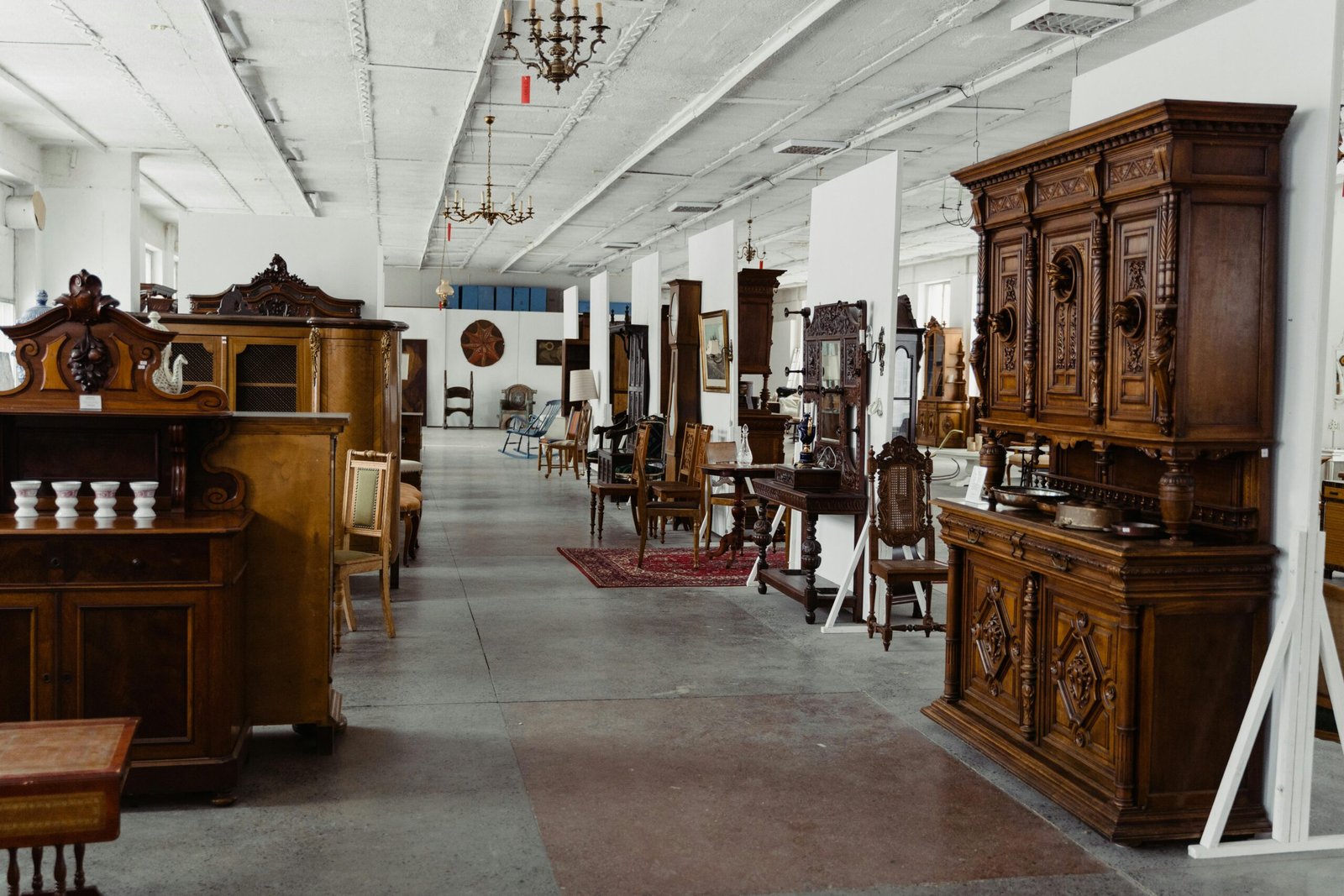
Where to Find Vintage Mid-Century Pieces (Online and Locally)
There’s something about mid-century design that never really goes out of style. Clean lines, warm woods, simple silhouettes — these pieces feel timeless and effortless, able to complement both modern and traditional homes. Maybe it’s because mid-century furniture was made with intention, care, and a kind of quiet confidence. Or maybe it’s the way it feels almost human when you use it. Running your hand along a teak armrest or opening a perfectly balanced drawer can make an ordinary moment feel just a little luxurious. It’s that combination of simplicity and craftsmanship that keeps people coming back to this era again and again.
One of the reasons I love mid-century pieces is that they don’t shout for attention. They’re not trend-dependent or overly ornate. A well-made sideboard or chair from the 1950s feels like the design equivalent of someone who knows exactly who they are — no flashiness required. When you place a mid-century piece in a room, it has this grounding effect, almost like it’s been there longer than you have, quietly watching your home grow around it.
Of course, part of the allure is the hunt. Finding authentic mid-century pieces can feel a bit like treasure hunting, and honestly, that’s half the fun. The key is knowing where to look, what to look for, and how to recognise quality when you see it. Maybe you’re starting your collection with one special piece, or maybe you want to slowly build a home filled with character. Either way, there are so many ways to discover pieces that feel personal — whether you’re browsing online at 11 pm or digging through a dusty antique warehouse on a Saturday morning.
Online Marketplaces: The Unexpected Gold Mine
Online marketplaces are one of the most surprisingly rich sources — and often the most budget-friendly. Platforms like Facebook Marketplace, Gumtree, and eBay are full of people selling pieces directly from their homes. Some listings are chaotic and poorly photographed, sure, but hidden in between are absolute gems.
I once found a beautiful solid teak bookshelf on Facebook Marketplace that looked like nothing in the listing photo — the picture was slightly blurry, taken at night, and the shelf was covered in houseplants. But something about the shape of the legs caught my eye. When I arrived to pick it up, the seller said, “You’re the only one who messaged me about it. I thought no one wanted it anymore.” It was gorgeous, sturdy, and easily worth triple the price. Those moments make the search worth it.
To narrow things down online, use keywords like “mid-century,” “Danish,” “teak,” “walnut,” “retro 1960s,” or “vintage 1950s furniture.” Save searches, set alerts, and check consistently — good pieces get snapped up quickly. And always ask for extra photos, measurements, and notes on condition. A quick video showing drawers opening or a close-up of the wood grain can tell you a lot.
Curated Vintage Shops & Specialist Marketplaces
If you prefer a more refined, less chaotic shopping experience, curated online marketplaces like Etsy or specialist vintage platforms are perfect. Prices can be higher, but you’re often paying for peace of mind — sellers usually provide designer information, wood type, restoration details, and shipping options.
Browsing these sites is also one of the best ways to train your eye. You start to recognise the curve of a classic Danish armchair or spot the difference between solid teak and veneer. Sometimes even just scrolling through hundreds of pieces gives you a mental catalogue of what authentic mid-century craftsmanship looks like.
And every so often, you’ll stumble upon a piece you’ve always wanted — a floating teak wall shelf, a sculptural lounge chair, or a minimalist coffee table — and suddenly the price feels completely justified.

Local Markets, Antique Fairs & Second-Hand Stores
If you enjoy the thrill of real-life discovery, local vintage markets, weekend antique fairs, and second-hand stores are treasure troves. There’s something magical about spotting a beautiful piece sitting quietly in a crowded stall, waiting for the right person to notice it.
Once, at a small vintage fair in my area, I came across a tiny teak side table hiding behind a stack of old paintings. It had tapered legs and that warm honey-brown mid-century glow. The seller told me it belonged to his grandmother, who used it every morning to drink tea by the window. I loved the idea that this table already had a history — and that now I’d be adding my own chapter to it.
Estate sales and moving clearances can be especially rewarding. Families downsizing or renovating often let go of pieces that have been lovingly cared for for decades. You’ll find items that were never listed online simply because people didn’t think of them as “vintage” — they were just furniture they owned. Those unintentional antiques tend to be the best finds.
If you’re really committed to the hunt, build relationships with local dealers or join community furniture groups. Once dealers know what you’re looking for, they’ll often send you photos before items hit the floor.
The Joy of Restoring What Others Overlook
And then there’s the part people don’t always talk about — the moment you finally spot something special, but when you look closer, you notice a few cracks, a loose leg, or maybe a bit of water damage hiding under the polish. A lot of people would walk away, but honestly, I love pieces like that. There’s something really satisfying about bringing an old, worn-in item back to life.
I’ve turned so many “maybe” pieces into weekend projects, sanding back a scuffed edge, tightening a few screws, or giving a tired finish a new glow. It feels incredibly fulfilling to take something neglected and turn it into a piece that feels truly mine. Every time I walk past something I restored myself, I get that quiet little spark of pride — knowing it has a story, and now I’m part of it. Those imperfections become reminders of the process, not flaws.
What to Look For When Shopping
Whether you’re browsing online or wandering through a shop, a few guidelines can help you spot quality mid-century pieces:
- Materials: Look for teak, walnut, rosewood, or oak — woods that age beautifully and were staples of the era.
- Construction: Examine dovetail joints, solid wood frames, smooth drawer movement, and sturdy legs.
- Proportions: Mid-century designs are balanced and purposeful, with clean lines and intentional forms.
- Condition: Some wear adds charm, but check for structural issues or repairs that might weaken the piece.
Instinct: If something draws you in immediately, trust that feeling.
The Beauty of Collecting Mid-Century Design
The best part of collecting mid-century furniture is that every piece has a story. Maybe it sat in someone’s family living room for 50 years. Maybe it was handmade by a Danish craftsman. Maybe it travelled through multiple homes before arriving in yours. Bringing a mid-century piece into your space isn’t just about style — it’s about history, texture, and the feeling that your home is evolving with intentionality.
These pieces age gracefully, and they make your home feel layered and lived-in rather than decorated all at once. And whether you find your treasures online, at a local market, through a dealer, or during a chance encounter, the process of discovery is what makes each piece feel meaningful. It’s not just furniture — it’s part of the story of your home.
